Another Timbre TimHarrisonbre
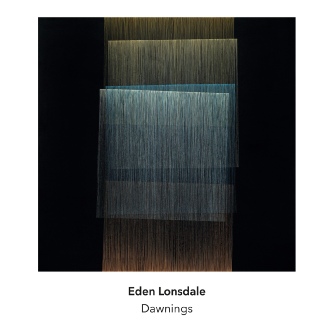
at228x2 Eden Lonsdale ‘Dawnings’
Double CD with five recent compositions by the leading young composer
CD1
1 Aurora (2022) 12:21 Anton Lukoszevieze, cello
2 Dawnings (2022) 32:05 Heather Roche, clarinet Kerry Yong, piano
3 Cloud Symmetries (2023) 34:15
Mira Benjamin, Chihiro Ono, Amalia Young & Angharad Davies, violins
CD2
1 Constellations (2023) 42:10 Oerknal, conducted by Hardy Li
2 Shedding, for seven violas (2022) 26:00
Ensemble Ipse, conducted by Carl Bettendorf
Eden Lonsdale
Previous album by Eden Lonsdale
Click on cover for more details
CD copies of ‘Clear and Hazy Moons’ have sold out, but down loads are available from our Bandcamp page here at a reduced price until the end of October 2024
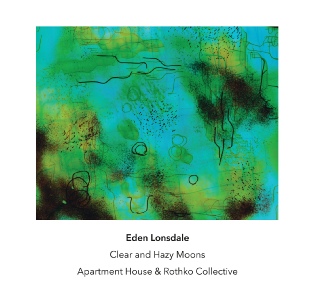
Interview with Eden Lonsdale by Marat Ingeldeev
It’s great to see you return to Another Timbre after your impressive debut album Clear and Hazy Moons last year. This time we have a double CD. Is there a common thread connecting the five pieces? I understand that the first disc features performances by Apartment House, while the second one is recorded by Oerknal and Ensemble Ipse. Could you tell us more about the project?
The starting point for this project was really quite conceptual. I wanted to release three
pieces for string instruments: one for solo cello, one for four violins and one for 7 violas—like a kind of deconstructed string quartet. Once we had all three pieces in the can, we found (somewhat unsurprisingly in retrospect) that it all ended up sounding a bit monotonous, and the individual qualities of the compositions didn’t really come across so well. So we decided to intersperse the string pieces with works for mixed ensembles to make for a more colourful palette. The latter four pieces on the disc are quite long, so the double CD format was really more of a practical decision than an artistic one.
Could you walk us through the first CD and the pieces on it?
The first disc comprises three pieces recorded in the studio with Simon and Apartment
House. Aurora is a solo cello piece that I wrote for Anton Lukoszevieze two years ago. It
uses a string playing technique that I have come to use often since, where the player fingers a single dyad on their instrument and varies only the left hand pressure. The various combinations of harmonics and stopped pitches that can be obtained in this way result in a total of 10 different dyads. On top of this, the cello is retuned in just intonation so that all four strings resonate sympathetically. What you end up with is a performer whose left hand is barely moving but somehow producing a wealth of rich chords, shrouded in an aura of hazy harmonics.
Dawnings is a piece for clarinet and piano in three movements. The composition is built from a tiny melodic cell of three consecutive intervallic steps which is repeated to form a
descending chain of pitches. The entire work consists of canons on this sequence. There are numerous types of canons that are used in the piece, with tight or wide entrances, in
inversion, retrograde or prolation, and each movement uses various types that are woven
into a more complex form.
The last piece on the disc, Cloud Symmetries, is for four violins and was written especially for this release. Like Dawnings, it uses a limited set of intervallic material to create the entire form. There is a continuous cantus firmus running like a spine through the entire work, only ever moving by a major second, fourth or fifth. Most of the piece is homophonic, with each note of the cantus firmus harmonised in four part chords, like a chorale. Every chord consists of the same three intervals that make up the horizontal movement stacked on top of their respective melodic note, only the order and the direction in which they are stacked is constantly rotating. The chordal passages are interspersed with sequences where the cantus firmus is either left bare or harmonised by only one other voice.
Later on in the composition, the chords are darkened and distorted by various preparations.
In your previous interview with Another Timbre, you talked about how the intuitive
and systematic are ‘intrinsically connected’ in your pieces. As a listener, it always
strikes me how fluid and natural your music feels given the meticulous compositional
processes that lie behind it. Do you often change your mind about certain realisations?
I think what I was saying in the previous interview was basically that the use of certain
systematic processes has become quite intuitive for me because I have used them so much. One of the reasons why I find systems indispensable is that they do a lot of the work for you. Without any kind of pre-existing rules, composing would be cripplingly difficult and even when we think we are making every decision intuitively there are usually systems at play that we are not aware of at that moment. Systems and processes create coherence, but at the same time I don‘t want my music to sound mechanical, so if a certain process isn‘t achieving an effect that I find musically appealing I will of course go back and change it. The difficulty is essentially finding the right processes but once you have them composing becomes a lot easier and faster. What I try to avoid however is intuitively overriding systematically generated structures because for me that usually becomes very messy and I lose sight of the bigger picture.
As for the second disc, how does it differ from the first, apart from a different set of
players, and what can you tell us about the pieces featured on it?
The main difference is really just that the two works on this disc are pre-existing live
recordings. There isn‘t anything specific separating them musically from the pieces on the
first CD.
Constellations is an extended composition for organ and an ensemble of seven players in
smaller groups which are spatialised around the performance venue—an element that
obviously doesn‘t really come across on the recording. This piece inhabits a space
somewhere between a concert piece and an installation. It has a clear overarching form, but at the same time one becomes completely absorbed by the fabric of every section.
Compositionally, it is really about layers separated in terms of simple musical functions and
the spatial dimension. The different layers move through independent cycles and while each layer is very simple in itself, the way they overlap and intersect each other creates an
emergent complexity of experience. Formally speaking, the piece functions in the same way, there are various related but clearly different soundworlds, fragments of which are
assembled in a mosaic-like fashion to build the form, almost like parallel sonic universes that the piece jumps between.
Finally‚ Shedding is a work for seven violas that is entirely made from a three-note melody.
This melody exists in two different transpositions, creating a total of six notes that make up
the piece until the very end where a seventh is added. The pitches are only ever altered
microtonally to create justly tuned intervals between the two parallel melodies. Apart from
this, another varying parameter is the left hand pressure as described for Aurora, which
creates a secondary melody in harmonics using the same fingering. The alternation between the melody in harmonics and the melody in stopped notes generates the form of the piece.
As you’ve mentioned already, most of the pieces on this album gravitate towards
extended duration. What is the difference for you between composing a short and a long work, both in terms of process and outcome?
To be honest, I find writing longer pieces much easier because the material has space to
breathe. In shorter forms, I often need to do painstaking amounts of clipping and pruning,
and even then I usually overshoot the duration mark. I enjoy working in durations where
there is room for all the different forms the material manifests itself as without having to
worry about running out of time. Being concise is of course generally a positive quality, but
there is also something to be said for just letting the music be what it needs to do so.
There is that famous Feldman quote where he says that pieces exceeding a certain duration stop being about form and become about scale instead. I can‘t even really explain to myself what he means by that, but intuitively I understand it completely.
Of the pieces on this release, I think Cloud Symmetries feels most like that. At the beginning, it is very square and classical, but as the composition goes on you lose track of where you are in the form and are drawn deeper into the sound instead. In Constellations for instance, it‘s sort of the opposite. I think this sense of immersion in the sound is clear from the beginning, but as you get deeper into the piece it becomes increasingly clear that the whole thing is a huge rondo.
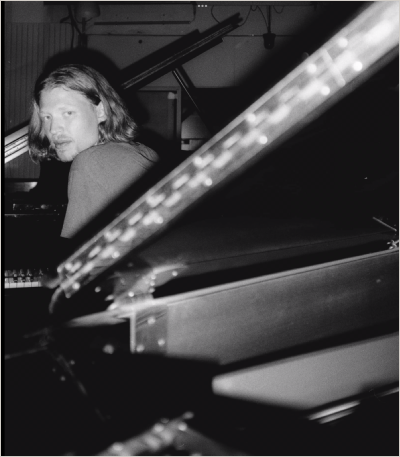
Eden Lonsdale
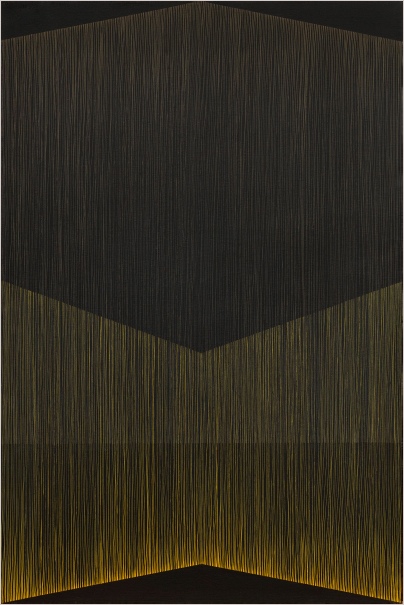
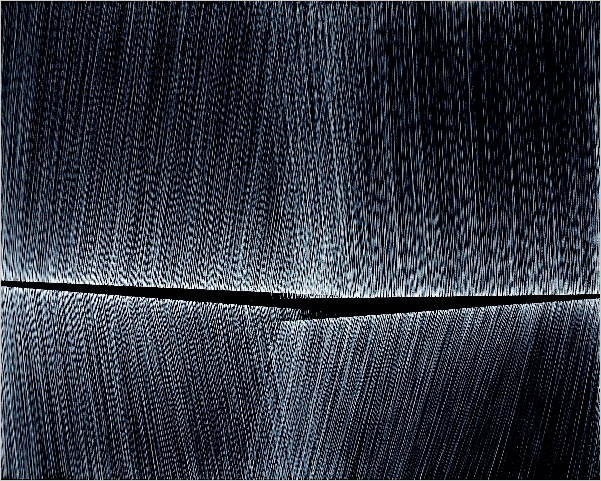
Artworks by Anna Szprynger, with thanks